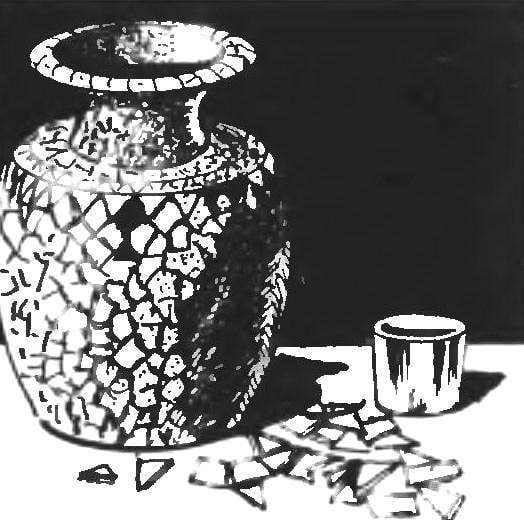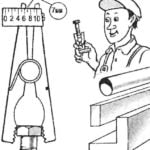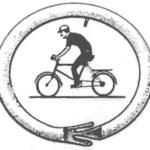 Simple technology for producing decorative items and ornaments offered by the magazine “Burda moden” for fans to make all their own hands. The gist of it is that the appearance of any existing familiar in everyday life products transforms beyond recognition thanks to the simple pasting of their surfaces… fragments of faience or porcelain, or even multicolored ceramic tiles.
Simple technology for producing decorative items and ornaments offered by the magazine “Burda moden” for fans to make all their own hands. The gist of it is that the appearance of any existing familiar in everyday life products transforms beyond recognition thanks to the simple pasting of their surfaces… fragments of faience or porcelain, or even multicolored ceramic tiles.
Readers interested in this possibility, and in his letters to the editors they were asked for more information about the production mentioned in the previous article of products (see “modelist-Konstruktor” No. 11’04). Because the technology of mosaic work was disclosed in some detail, today let’s briefly review the specific recommendations for the design of individual decorative items for your home or garden.
<>Decorative plate
It can be any existing big dish. However, it is best for this fit neblina shallow ceramic bowl: the surface is easier pasting.

Ordinary dish due to the mosaic turns into a decorative plate
First glue one of the prepared small ceramic tiles on the bottom of the jar, better in color or pattern. If the bottom area is small, and the pattern of the workpiece, it is desirable to maintain a fully — pre-caution “bite” forceps, pliers or clippers the corners of the tiles, giving it the shape of the bottom of the bowl. Then put the main border on the upper edge of the bowl, and then randomly place the remaining shards on the entire surface.
Table vase
As decorative plate, it will be a beautiful thing, especially since it’s not too difficult to manufacture.
The more it is expected the repetition of the mosaic pattern and the smaller the required shards, the more time it will need for preparatory work.
To acquire the necessary skills in the mosaic technique, we do not accidentally recommend in a previous publication to start with the frame for the mirror or the box of the product with a flat surface — the most simple and convenient design of the model. Much more difficult to work with curved surfaces: they will remain “smooth” if the shards are small in size — the smaller the better.

Elevation mosaic flower pot:
1 — shards sticking through the plaster mass; 2 — the rubbing of gypsum in the cracks of the mosaic soft rubber spatula; 3 — cleaning the surface of the mosaics from the remains of plaster; 4 — coating of articles with a transparent varnish
Tip: a common pattern and workpiece with flowers and leaves first put on the table and only then begin to glue the shards on the vase, any transferring them from the table, following the intended pattern or alternating colored shards. To start gluing, you should always with edge (top or bottom) of a number. Only then decorate it, move on to filling the rest of the surface. Looks very impressive vase, which upper part (edge) remains Poklonnoj. “Clean”, without shards, remains bottom of the vase (and, if applicable, handles).
Decoration
Their production is the most complicated mosaic, as in many ways it requires a more subtle performance, which, in turn, dictates special requirements to the material itself and the preparatory operations. For procurement, the mosaic will require a worn or broken product of thin (preferably Japanese or Chinese) porcelain saucers, plates, dishes — that is, a utensil that has a more flat shape than the cups, bowls, vases. Although from the latter we can choose the elements that are suitable for jewelry. Useful are also fragments of a mirror (same thickness as the product of porcelain) and any beads.
The basis of the decorations will serve as the metal frame for brooches, clips, ornamental pins: pendants, bracelets, hairpins, buckles for belts. If necessary, you can add split metal rings (for fastening parts); snap carbines. Of supporting materials — clay, clear varnish, a bit of plaster or molding material, acrylic paint of the desired color.

Ceramic vase will be elegant, if you paste the pieces of colored tiles

Mosaic jewelry: brooch and clip earrings
Tools — small pliers, a small hammer, a rubber spatula, tweezers, nail file or sandpaper.
Because decoration is something more subtle, consider the details and job description. Original product from China, designed to procure him a mosaic, you need to wrap with a towel and put on the table face down. Several exact blows with the blunt end of a hammer to break the product. The resulting large shards again wrap each with a towel and additionally break up, and with one blow of the hammer: if you beat a few times, the porcelain will shatter. It happens that in the process you will need a very small shards — better “namesti” their cutters. It is possible that such details will have to attach the universal glue. In this case, before sticking the pieces necessary to put under the metal base of the jewelry piece of clay, to comply with the need to glue the horizontal position.
Dissolve plaster better in small portions, because this material very quickly solidifies. You should apply it on small areas of the plane of the rim, hiring from the outer edge. First to glue the shards of processed (podshlifovyvat) edge, and when they will end — to smooth out the sharp edges of the remaining shards with a nail file or sandpaper.
All the pieces are glued it is ready for smearing the grooves with plaster or molding mass (this operation does not necessarily produce, if the jewelry you like in its original form). The slots should be to cover small rubber spatula, a good tamping plaster and immediately removing it with a cloth with shards. Wet the putty can be covered with a layer of color-matched acrylic paint. The paint that got on the shards, you must immediately rinse. After drying putty to erase and its remnants. You can decorate the product with beads and seed beads. The finished decoration to cover with a transparent varnish.
B. VLADIMIROV



